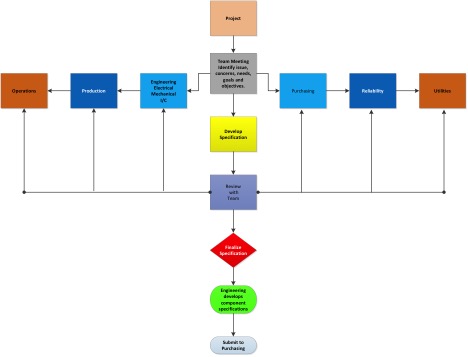Author: William Livoti
The title of this article may appear to be somewhat strange, that being said, those of you that are involved with reviewing equipment specifications will know exactly where I’m coming from.
I suspect many of you have experienced the phone call from purchasing that the vendors don’t have enough information to quote the equipment. Or worse yet, issues with the equipment after installation, the primary topic of this article.
I’m sure you have all heard the old saying “An ounce of prevention is worth a pound of cure”. That couldn’t be more true when developing / writing equipment specifications. In todays, tough economic times where sustainability and bottom line savings has become the main topic of discussion.
Equipment specifications are prepared prior to issuing RFQs. The specification is then (typically) added to the purchase order along with whatever revisions are agreed upon during the negotiation process. The key point here is that the equipment specification is now part of the purchase order. Both the buyer and seller have legally agreed to provide said equipment as specified be it correctly specified or not.
A specification can be considered a tool for engineering and purchasing to communicate their requirement to sales or EPC depending on size and scope of the project. Therefore the document must include not only the equipment but the requirements the equipment must meet. This can only be determined by obtaining input from all parties that have a vested interest in the equipment purchase.
Writing specifications is a critical but often poorly executed process that few people want to engage in. As a result many projects, pump systems for example, end up as unreliable and costly installations adding additional strain to overworked maintenance personnel and impacting plant productivity and efficiency.
How can we avoid this, what can we do as engineers, operations, production, reliability, maintenance and purchasing people? How about a little team work.
Active team participation in development of a specification is the best opportunity to insure optimum reliability, efficiency and Life Cycle Costing. Generating the specification is the most critical part of engineering, the part that anticipates and avoids problems. With input (team approach) from maintenance, operations, production, reliability and purchasing, engineers have the opportunity to look at the big picture. Including the entire team in the specification process is the groundwork for successful installation of a system that meets the needs of everyone within the company.
The Process Flow Diagram below provides a guide for the development of a successful specification with a clearly defined Ultimate Goal as determined by the “Team”.

Communication and a goal oriented team (User Involvement) will go a long way to insure a reliable, efficient equipment / project. It’s always beneficial to have the full support of all interested parties.



